Lungwort's spotted leaves look a little bit like lungs (lungen in Old English) and therefore people in ancient times believed it would cure lung trouble. And they were right!
Lungwort makes a good cough mixture when you brew it in hot water like tea. Unfortunately, like all good medicines, it tastes absolutely foul!
Despite the terrible flavour, people grew Lungwort in their gardens for centuries, so they'd always have some available in case of a cold. In those days it was often known as 'Josephs and Maries' or 'Adam and Eves' because the flowers have different colours on the same plant at the same time (blue and pink).
Lungwort can also help with belly aches. Dogs with gurgly tummies like eating it for that reason.
In a time when girls often weren't allowed to go to school and most women couldn't write, one girl broke the rules.
Hildegard von Bingen (1098-1179), German Benedictine abbess, saint, philosopher, writer and composer (you can still listen to her music today, almost 1,000 years later! Click here to listen), wrote a nine-volume book about the scientific and medicinal use of plants, stones, fish, reptiles and animals, called "Physica" (1150), which, like her music, is still available today.
In this book she wrote how she saw that sheep that ate Lungwort grew fatter and healthier than sheep that didn't. She then thought that sheep look a little like lungs, and that Lungwort looks a bit like lungs as well.
Hildegard concluded that Lungwort, which she called Lunckwurcz must be good for your lungs.
She wrote that for
"One whose lung is swollen so that he coughs and can hardly draw a breath should cook lungwort in wine, and drink it frequently, on an empty stomach. He will become well."
Lung stems from the Old English ‘lungen’, which we can trace all the way back to the PIE word ‘legwh’ which means ‘of little weight, not heavy’. The word ‘wort’ comes from the Old English word Wyrt meaning root, herb, vegetable, plant or spice, usually used for plants with healing powers.
In other languages Lungwort is also named after lungs, Longkruid in Dutch, Lunckwurcz in German, Pulmonaire in French, which leads us to Lungwort’s scientific name ‘Pulmonaria’. It comes from the Latin word ‘Pulmo’ wich means lung. The word ‘officinalis’ means ‘belonging to a storeroom in a monastery’.
I think we should all have some in our storerooms, together with a bottle of wine and use Hildegard’s recipe in case of suffering from a nasty cold (but not when you’re pregnant or breastfeeding). Cheers!
This newsletter is NOT a field guide for flower identification. It’s often difficult to tell the difference between harmless plants and poisonous plants and some flowers are rare and protected by law, so, NEVER pick or use any plants or flowers if you’re not sure about them.
illustrations and text ©Chantal Bourgonje


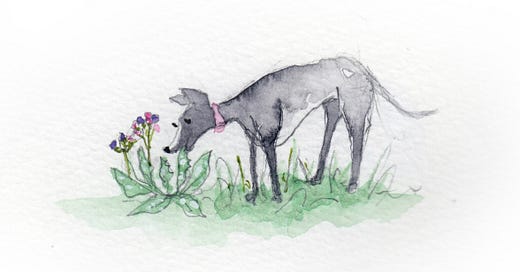



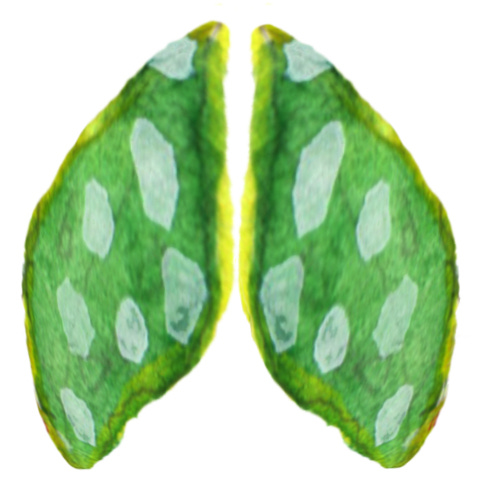
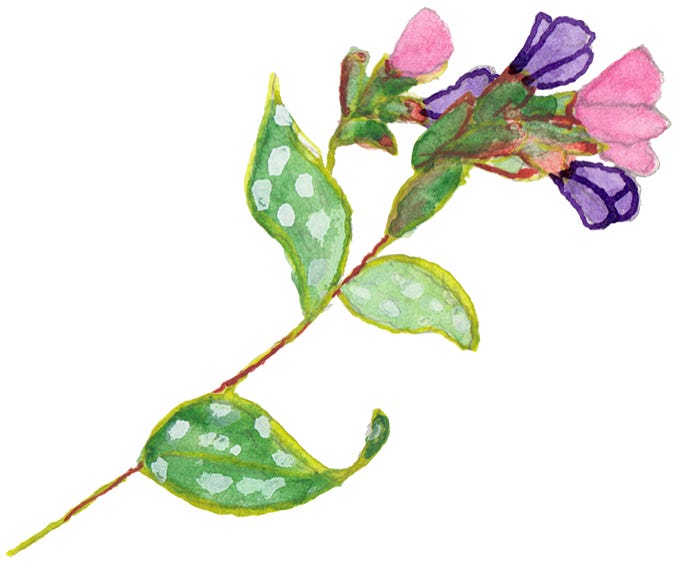
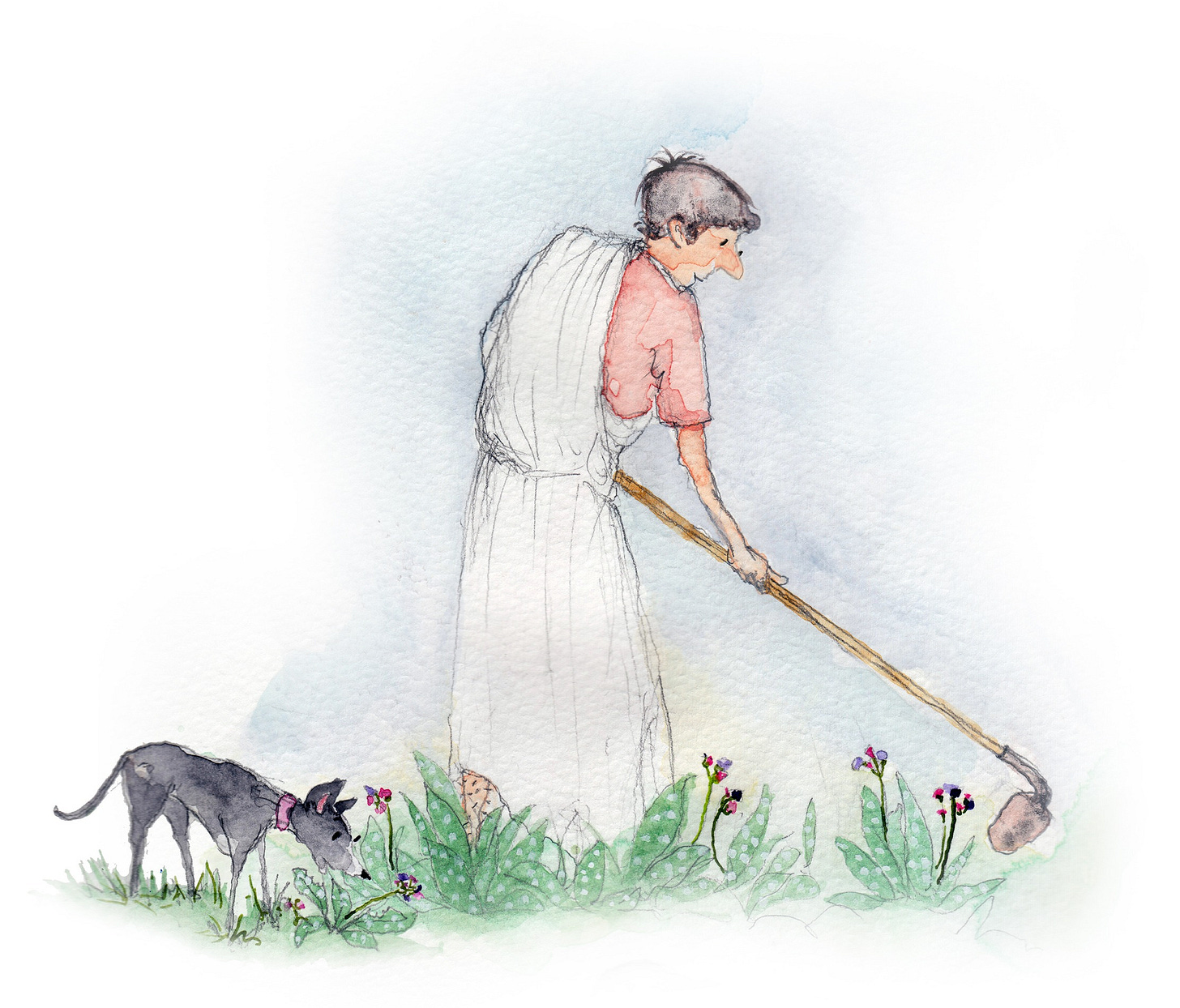

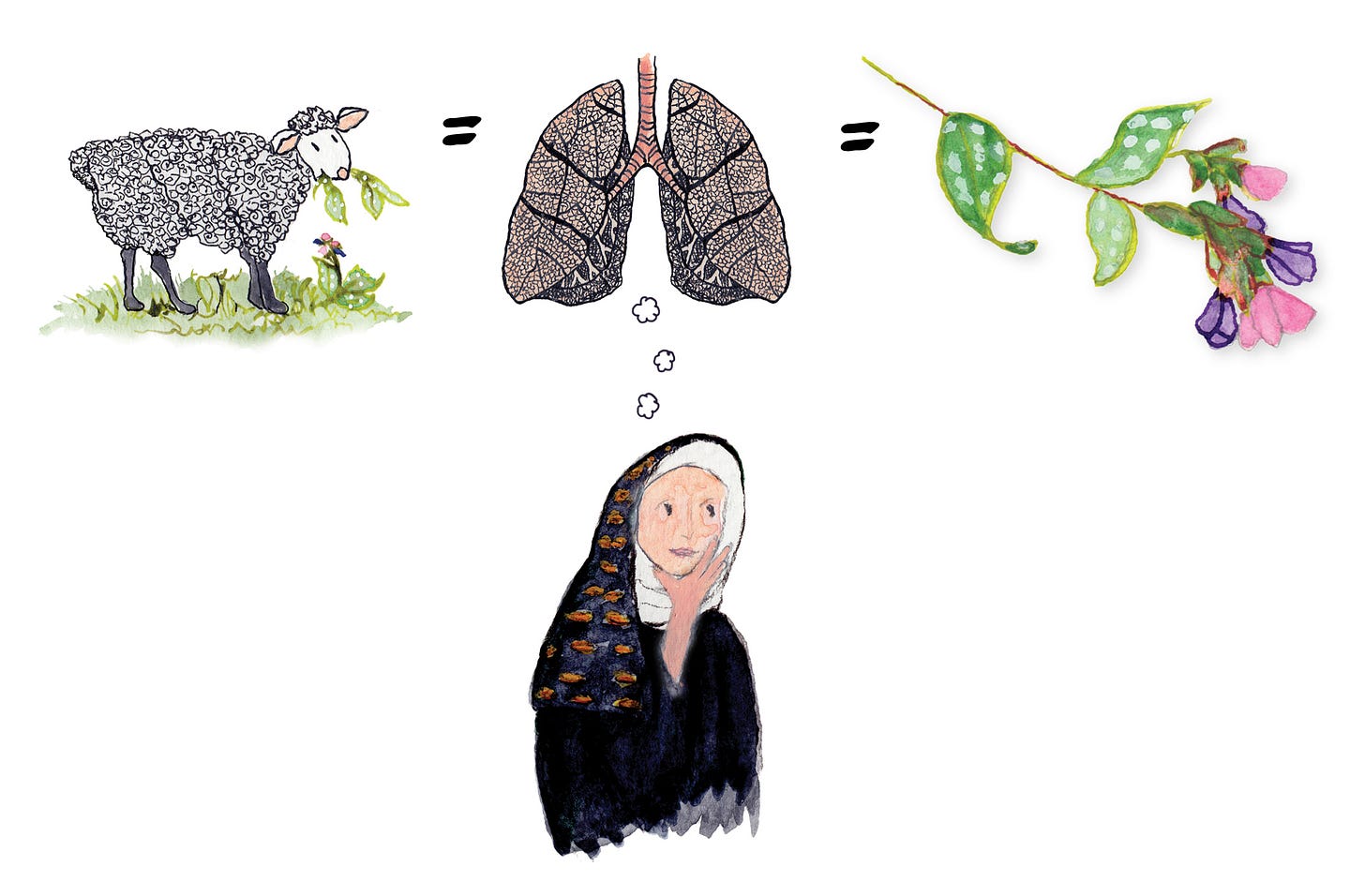

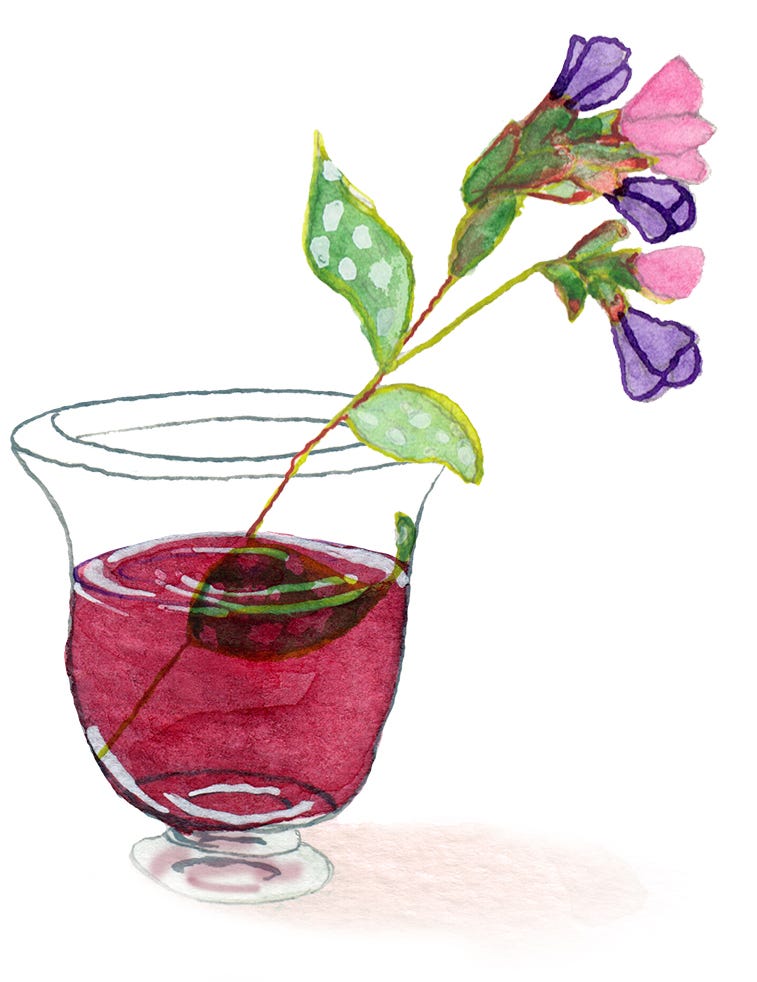


I can use a glass of lungwort now 🤧. I like this beautiful plant anyway.
Love this. Lots of trial and error in figuring out what herbs were helpful medicinally. Amazing how some hunches were right. And the music is gorgeous!! Thanks Chantal!